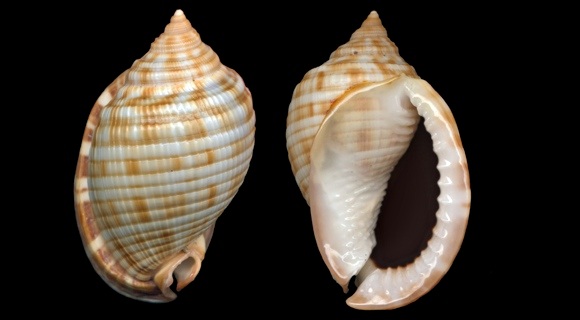
Algarve to Canarias, Azores to Mediterranean.
Predator on Echinoderms of the subclass Irregularia, in the infralittoral and the circalittoral.
Original taxon: Buccinum granulatum.
9m deep, on sand, Almyra, Sisses, Heraklion, N. Crete. 52mm.
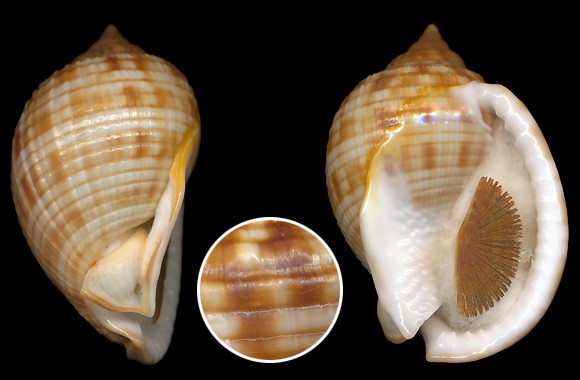
« Testa ovata, transversim obsolete sulcata, longitudinaliter tenuiter striata. Spira conica, decussatim striata. Apertura longa, utrinque dentata. Labrum exterius marginatum, extrorsum reflexum, intus dentatum, interior transverse plicatum, subtus expansum, punctisque elevatis seu granis adspersum. Basis desinens in canalem rostratum recurvum. Sutura lateralis prope columellam nulla. Color albus, maculis quadratis luteis secundum series digestis. » – I. von Born: Index rerum naturalium Musei Caesarei Vindobonensis, Pars I Testacea, Vienna 1778, p.240.
A perfect Mediterranean granulata: knobbed body, rounded shape, pale colours. 35-40m deep, on sand, in nets, Alger Bay, Wilaya of El Djaza´r, Algeria. 50mm. In the circle, detail of an undulata from the same spot.
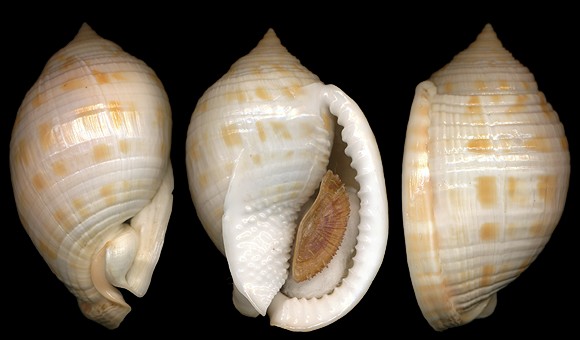
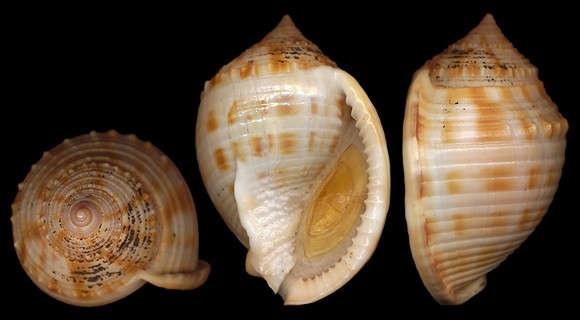
strong sculpture with nodules on shoulder.
50-60m deep, off Guarapari, Espirito Santo, Brasil. 51mm.
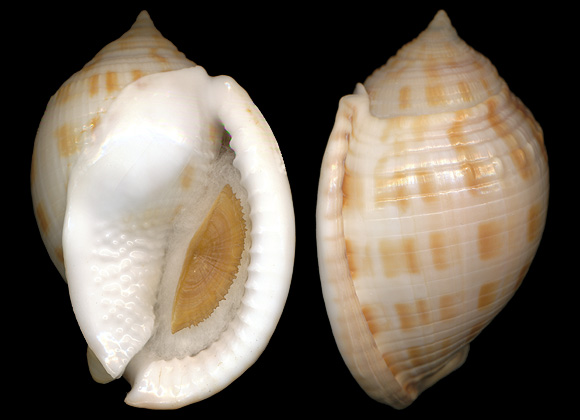
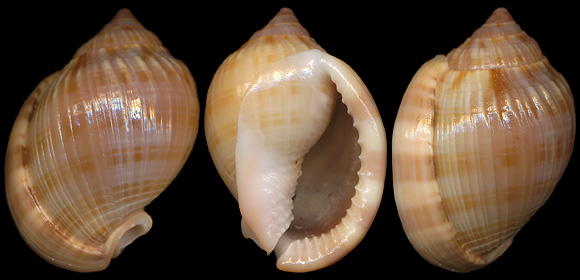
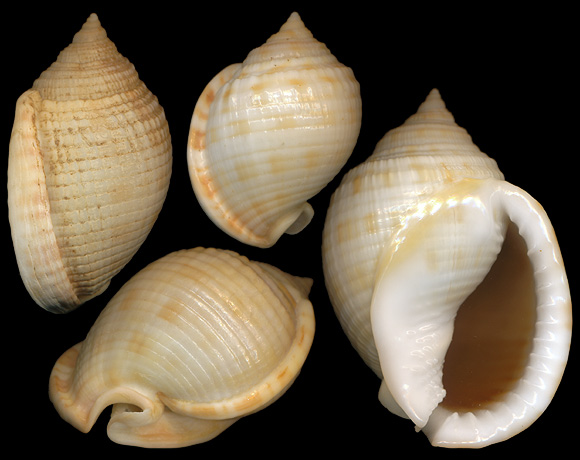
Differences with undulata are subtle: • the knobs, more or less marked, cover the whole surface in granulata, while they are, when they exist, located only below the suture of undulata; •• the shape is rounder in granulata, a bit more elongated in undulata; ••• granulata is paler, with often a better defined pattern of squared blotches.
Palm Beach County, SE. Florida. 40-62mm.
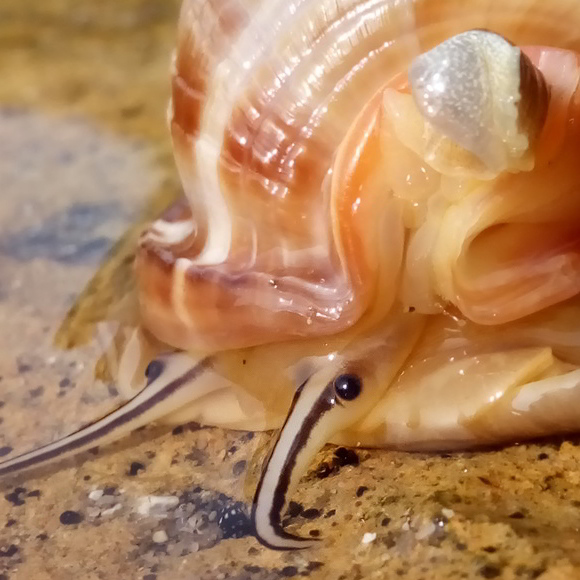
Like in undulata, the cephalic tentacles are striped. Low tide, Cazones de Herrera, N. of Veracruz, NE. Mexico. Original picture provided by vicencio2 for iNaturalist – (CC BY-NC).